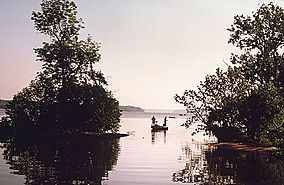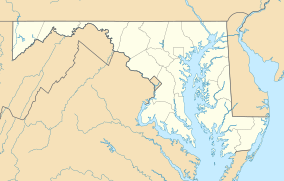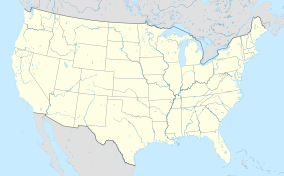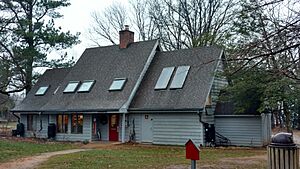Piscataway Park facts for kids
Quick facts for kids Piscataway Park |
|
|---|---|
|
IUCN Category V (Protected Landscape/Seascape)
|
|

View of the Potomac River at Piscataway Park
|
|
| Location | Prince George's County, Maryland, USA |
| Nearest city | Accokeek, MD |
| Established | October 4, 1961 [1] |
| Visitors | 176,174 (in 2005) |
| Governing body | National Park Service |
| Website | Piscataway Park |
|
Piscataway Park
|
|
| Nearest city | Accokeek, Maryland |
| Area | 4,216.5 acres (1,706.4 ha) |
| NRHP reference No. | 66000144 |
| Added to NRHP | October 15, 1966 |
Piscataway Park is a special place protected by the National Park Service. It is located about 20 miles (32 km) southwest of downtown Washington, D.C., near Accokeek, Maryland. This park helps protect important historical sites like the National Colonial Farm, Marshall Hall, and the Accokeek Creek Site.
The park sits right across the Potomac River from George Washington's famous home, Mount Vernon. It is named after Piscataway Creek, which got its name from a Native American tribe. Piscataway Park is home to amazing wildlife, including bald eagles, beavers, and osprey. You can find different types of land here, like wetlands, open meadows, and thick woodlands. The National Park Service manages the park through National Capital Parks-East.
History of Piscataway Park
How the Park Was Created
The story of Piscataway Park began in 1928 when Henry and Alice Ferguson bought over 100 acres (0.40 km²) of land in the area. This land included a very old Native American village called Moyaone. The Piscataway tribe lived there, and it was last used by them in 1623.
The Fergusons loved the environment and wanted to protect it. They bought more land and even encouraged their friends to move nearby. This way, more people could help protect the natural beauty of the area.
Protecting the Land and Views
After Alice Ferguson passed away in 1951, Henry created the Alice Ferguson Foundation. This foundation took care of the land. Later, the foundation made plans to give the property to the National Park Service. This transfer was completed in the 1960s.
This important step helped protect the environment. It also saved the historic view from George Washington's Mount Vernon mansion. By keeping the parkland natural, it looked much like it did in Washington's time. This also stopped new buildings from being built along the river's shore.




